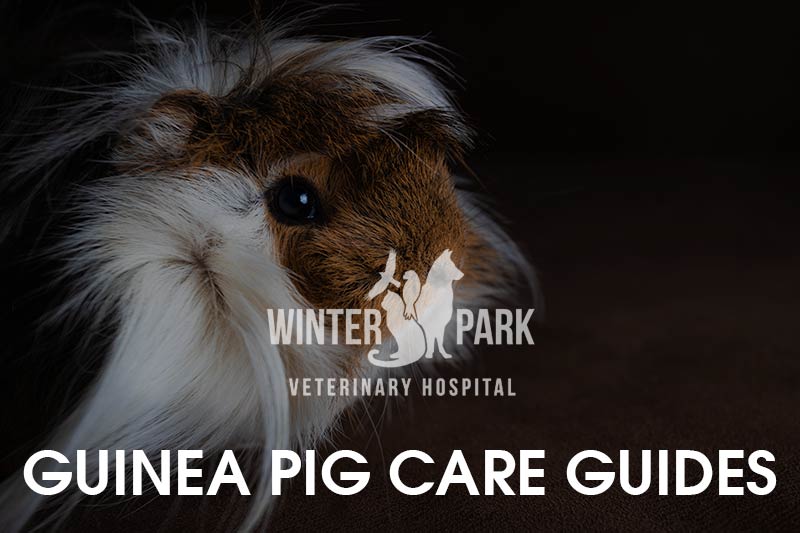Ferret Care and Feeding
Download Ferret Care Guide – PDF
The ferret, Mustela putorius furo, is a close relative of skunks, mink, otters, and badgers. It is, however, a domesticated animal that has a growing following in the United States and can be a good pet if its requirements are met.
Types and Terms
There are 2 varieties of ferrets, based on coloration. Sable ferrets (the most popular) are buff colored with black masks, feet, and tails. Albino ferrets are white with pink eyes. The female ferret is called a “jill”, while the male is called a “hob”. Babies are “kits”.
Physiology and Behavior
The gestation period of ferrets is 42 to 44 days, with average litter sizes of 8 kits (range is 2 to 17). Kits are born deaf, with their eyes closed. Their eyes open and they begin to hear between 3 to 5 weeks of age. The deciduous (temporary) teeth erupt at 2 weeks of age, at which time they wean to solid food. (Commercial kitten chow is recommended, starting at 4 weeks.) Kits reach adult weight at 4 months, with males being twice the size of females. Weight varies throughout the year; heavier in winter, leaner in summer. The average lifespan is 5-7 years.
Ferrets make wonderful pets because of their energetic personalities, playfulness and generally clean nature. They can easily be trained to use a litter box. Provide a low-sided litter pan or box for easy access. More than one litter box may be necessary if your ferret(s) have run of the house.
Ferrets have no innate hostility toward dogs or cats, but often injure pet birds. Free-roaming ferrets and free-roaming birds is a mixture destined for disaster.
Because ferrets are inquisitive to the extreme, is a great idea to ferret-proof your home before bringing a pet ferret into the house. Ferrets can squeeze through very small openings. Check every room your ferret can get into or will be allowed to roam through. Seal all openings greater than one inch wide and be sure all windows have secure screens. Openings around plumbing, air conditioning or heating ducts or pipes are favorite hiding spots. Some kits are small enough to slip under doors.
Many ferrets are injured as an indirect result of their boundless curiosity. They can appear suddenly underfoot and stepped on; be tossed into clothes washer with the laundry (they love to sleep in clothes piles); squeeze unnoticed into a sleeper sofa or recliner; curl up for a nap under a throw rug and be trampled. Constant awareness by the family is needed to avoid these types of accidents. One suggestion is to place a breakaway or stretch collar (the type used on cats) onto your ferret with a small bell securely attached to the collar. The bell will warn the family of the ferret’s location.
While ferrets rarely damage furniture or clothing, they will chew on shoes and any rubber available. Ferrets have been known to eat sponges (sometimes soaked with household chemicals) and become deathly ill. Do not give ferrets rubber chew toys: they will eat them and need surgery to remove the intestinal impaction that occurs. Injury from chewed electrical and telephone chords are uncommon but do occur.
Older ferrets tend to be calmer than youngsters. Kits nip frequently just as puppies and kittens do. This play behavior subsides as the ferret ages and almost all ferrets outgrow biting completely. However, many people have low tolerance for nipping kits, because their sharp teeth frequently draw blood, leading their children owners to punish or confine the kit. Remember, this behavior is normal in kits: be patient. Parents of small children are advised to use caution when exposing infants or toddlers to ferrets. Closely monitor all contact between little humans and ferrets.
Ferrets have extremely sharp nails (claws) that require periodic trimming. This is easily done and can be taught by a veterinary technician or veterinarian. There is no specific rule as to how often nails are to be trimmed: do as needed.
Diet
Feeding a high-quality ferret food easily satisfies the dietary requirements of a ferret. Talk to our team about the most up to date ferret dietary recommendations. Cat food is too high in fiber and too low in protein and fat for the ferret. Soft or semi moist food can lead to gum disease and tooth loss. Limit access to table food.
Feed high-quality, dry ferret food only and small amounts of vegetables and fruits as a TREAT.
Avoid sweets, all dairy products, carbohydrates (pasta, bread, rice) and any type pf bone or items containing bones.
Provide fresh water all times. Water bottles or ceramic crocks can both be used. Change the water daily or more frequently if needed. Wash out water bottles with hot, soapy water at least weekly.
Housing
We strongly recommend confining ferrets to a cage or ferret-proofed room when home alone or when adequate supervision is not available. Most ferrets prefer to sleep within a confined area and will not suffer from confinement during the day. A cat- or rabbit-sized wire cage or airline type carrier works well. Towels placed on the bottom of the enclosure allow the ferret to tunnel and sleep out of sight (their favorite manner to sleep). Whichever enclosure you choose be sure there is ample room for the ferret, litter box and food/water dishes. Some owners make hammocks suspended from the top of cage and filled with towels as a sleeping area for their ferrets. This arrangement seems to work well, giving the ferret a soft, secluded area to sleep.
Odor Control
The objectionable odor of pet ferrets is primarily the result of the influence of sex hormones on normal skin secretions. The anal glands also produce a pungent secretion that continues throughout life. Castrating or spaying reduces some of the odor, but
removal of the scent (anal) glands helps even more. The anal glands are often removed at the same time as a spay/castration procedure. However, ferrets will always have some odor.
Neutering
Ferrets are commonly spayed/castrated (and de-scented) at a very early age, often done before youngsters are sold. Neutering limits odor (as explained before) and can prevent mammary, uterine and testicular cancers.
Female ferrets can come into heat more than once during the March through August breeding season. If she is not bred, however, she can stay in heat up to 160 days! This prolonged heat can cause bone marrow suppression, anemia and death. We recommend all female ferrets, unless intended for breeding be spayed by 5-6 months of age.
Restraint
Restraint is accomplished by lifting gently by nape of the neck (the scruff) and allowing to dangle. This position, however, becomes tiresome to the ferret after a few minutes and a struggle can ensue. Supporting the ferret under the armpits and hip is better for longer restraint or transport. Most ferrets can be restraint by simply putting a couple of drops of Ferretone on their tummy. While your ferret is occupied licking the Ferretone you can easily trim the nails, clean the ears, check for dental tartar and give a quick look over for any obvious abnormalities.








